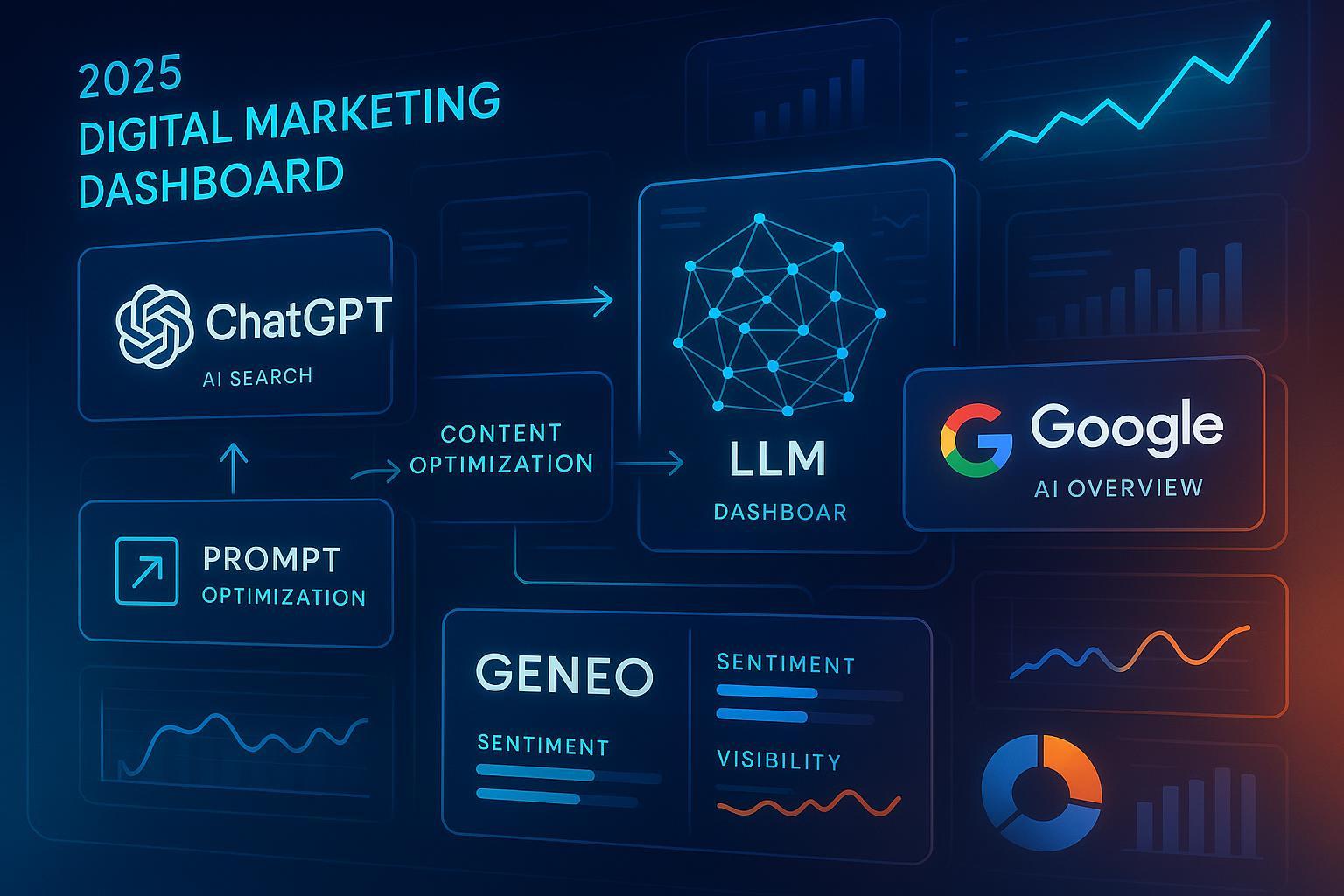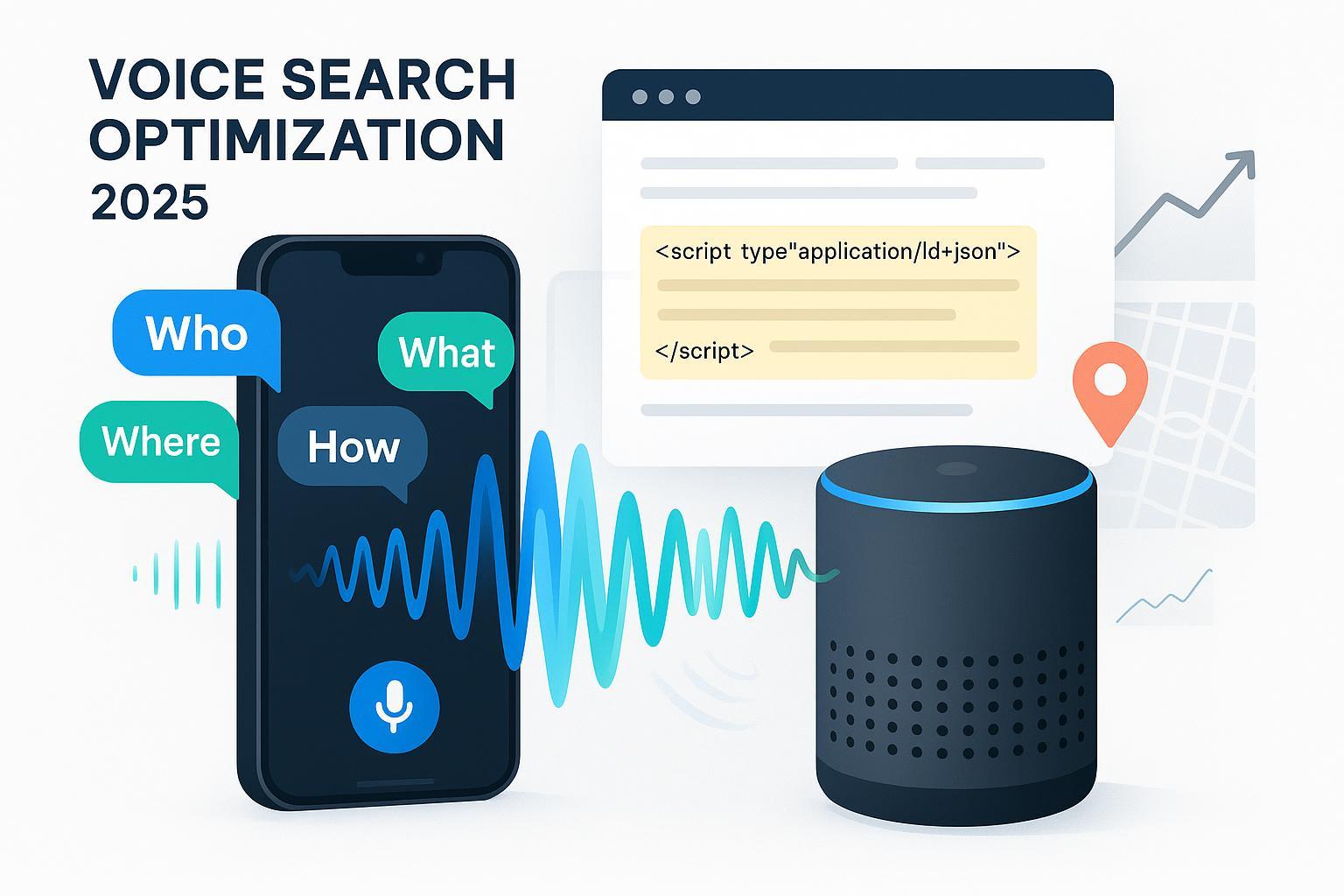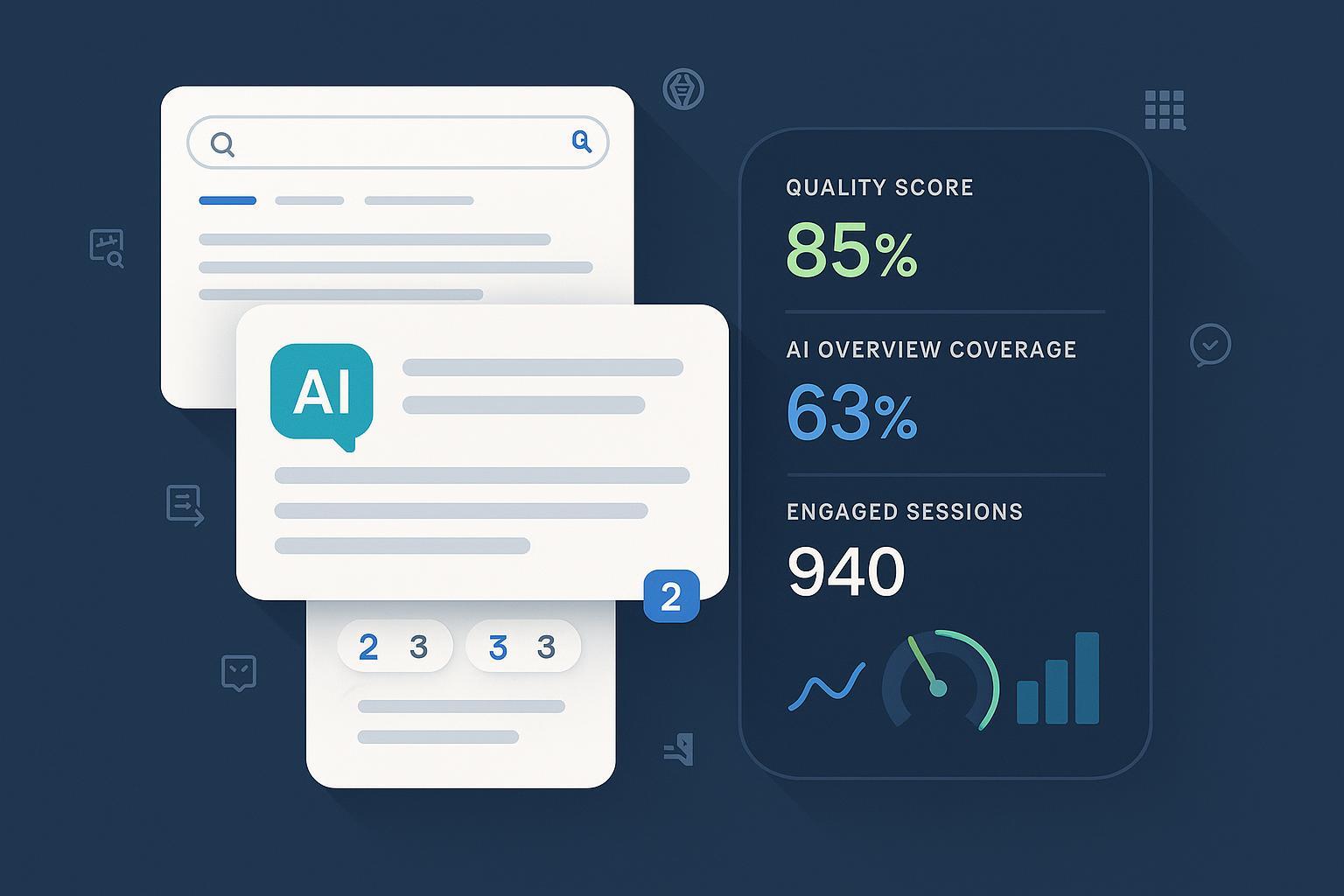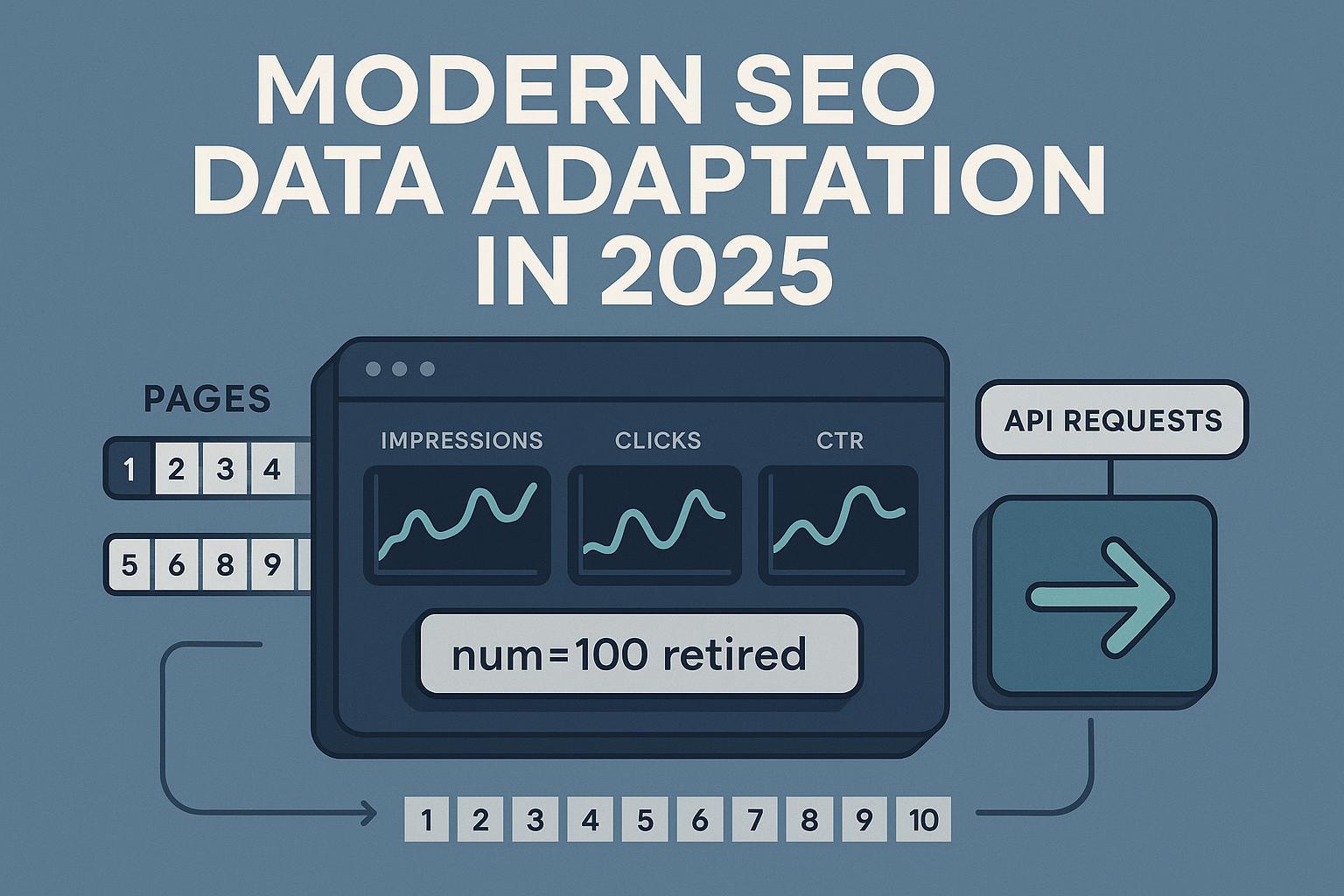Best Practices for AI Search & LLM Optimization in 2025
Actionable 2025 playbook for optimizing AI search visibility using LLM prompt engineering, modular content, and Geneo’s multi-platform measurement tools.


Introduction: 2025 Playbook for AI Search Visibility—Skip the Theory, Start with Action
As AI search platforms reshape the digital landscape—ChatGPT, Google AI Overview, Perplexity, and Gemini—brand managers and marketers face a sobering challenge: old SEO tricks alone won’t get you visible in LLM-driven answers. Optimizing for AI search now means merging deep prompt engineering with modular content strategies and deploying next-gen analytics platforms like Geneo for smart, real-time feedback. If you want your brand cited, recommended, or quoted by AI engines in 2025, here’s the playbook built from hard practice, not textbook theory.
This guide delivers:
- Step-by-step workflow for multi-platform AI search optimization
- Immediate tactics for LLM prompt engineering and modular content
- Real examples of tracking, benchmarking, and iterating with Geneo
- Pitfall alerts and tradeoff guides for every section
Section 1: Building Your AI Search Optimization Workflow—What Works in 2025?
Workflow Overview:
- Benchmark Your Brand Visibility and Sentiment (Geneo, Yext Scout, BrightEdge)
- Engineer High-Impact Prompts For LLMs
- Publish Modular, Entity-Rich Content with Technical Optimization
- Measure and Compare Multi-Platform Results (Geneo, Semrush, Sistrix)
- Iterate Rapidly—Repeat, Adjust, Track with Historical Dashboards *(Geneo’s real-time and historic analytics)
Pro Tip: Start with anonymized multi-platform queries: “How is [Your Brand] perceived on ChatGPT/Gemini?” and record citations, sentiment, and positioning before changing any content or prompts.
Workflow Visualization:
- See Geneo’s dashboard: Dynamic charts highlighting brand mentions across AI platforms, evolving sentiment, historical visibility trends—allowing instant comparison post-optimization (How Geneo’s Dashboard Works).
Section 2: Prompt Engineering—Making Your Brand AI-Friendly, Not Just Keyword-Rich
Peer-Tested Framework:
- Objective: Train LLMs to recognize and prefer your brand in answers
- Persona & Role Play: Frame prompts as expert queries (“You are a consumer tech analyst...”)—LLMs respond more precisely
- Context & Clarity: Supply chunkable facts, entity tags, and links—make every prompt content-rich
- Stepwise Iteration: Refine each prompt for brevity, relevance, and citation likelihood
- Multi-Modal if Available: Add visual cues when platforms allow (e.g., product screenshots)
Example Prompt Iteration (Real-World):
Prompt 1: What are the top features of [Brand] in AI search?
→ LLM replies but no direct citation.
Prompt 2: As a trend analyst, compare [Brand] and [Competitor] using the latest AI search rankings; include expert commentary and source links.
→ ChatGPT/Google AI Overview starts citing your brand’s page, pulling key features and integrating sentiment from recent reviews.
Checklist:
- Persona-driven question?
- Included recent citations and links?
- Structured for modular LLM answer format?
- Iterative improvements logged and reviewed?
Pitfall Alert: Overloading prompts with brand-positive adjectives can lead to LLM dismissal as self-promotional. Focus on structured facts, cited achievements, and up-to-date data.
Geneo Integration:
- Use Geneo’s historical query logs to discover which prompt forms earned LLM citations and positive sentiment. Track changes and adapt prompt strategies accordingly.
Section 3: Modular Content Structuring—Make Your Site “LLM-Extractable”
2025 Foundations:
- Chunk Content: Each H2/H3, bullet list—one answerable question per section
- Entity Management: Explicitly tag brand, product, and competitor mentions in semantic HTML
- E-E-A-T Enhancement: Use expert quotes, transparent sourcing, authorship, and trust signals
- Technical Optimization: Open Graph tags, FAQ schema, fast page load, mobile usability, and llms.txt deployment (More on llms.txt)
Example:
- Galileo-FT.com improved ChatGPT visibility by 35% after restructuring content with dedicated modular sections, expert commentary, and robust schema (Case Reference).
Mini-Checklist:
- FAQ schema and OG tags implemented?
- Each topic clearly chunked?
- Citations and quotes transparent?
- llms.txt using preferred brand directives?
Pitfall Alert: Unstructured, single-page guides rarely surface in AI answers. Modularize or risk invisibility!
Geneo Integration:
- Deploy Geneo’s suggestions to identify under-chunked content and missing technical elements—real-time scoring shows which changes generate new AI citations and improved sentiment.
Section 4: Tracking & Measuring—Geneo’s Edge, Benchmarks, and Competitive Perspective
Why Multi-Platform Tracking is Non-Negotiable:
- AI engines cite, exclude, and judge brands differently across platforms. One-size-fits-all metrics fail; you need a consolidated dashboard.
How Geneo Stands Out:
- Real-Time Multi-Platform Monitoring: Track mentions, sentiment, and citation frequency across ChatGPT, Gemini, Perplexity, and Google AI Overview.
- Historical Query Analysis: Benchmark before/after optimization and surface recurring answer patterns for iterative improvement.
- Sentiment Engine: Identify and flag negative consumer or expert sentiment impacting AI answer inclusion.
- Content Optimization Recommendations: Dynamic suggestions for boosting AI recognition, citation probability, and sentiment uplift.
Benchmark Data:
- In anonymized trials, brands using Geneo reported a 22-38% increase in positive citations within LLM answers after targeted modular edits and prompt iteration (see Geneo Influencer UGC Guide).
Competitive Table:
| Platform | Multi-LLM Tracking | Sentiment Analysis | Historic Dashboards | Content Suggestions |
|---|---|---|---|---|
| Geneo | ✅ | ✅ | ✅ | ✅ |
| Yext Scout | ✅ | ✅ | ❌ | ❌ |
| BrightEdge | ✅ | ❌ | ❌ | ✅ |
| Sistrix | ✅ | ❌ | ❌ | ❌ |
No vendor provides full journey analytics; Geneo offers unique feedback loops for live and iterative LLM optimization.
Section 5: 90-Day Optimization Sprint—Real Workflow for Measurable Improvement
Scenario: A mid-sized SaaS brand begins with low AI search visibility—80% of platform answers omit their name or reference. Using Geneo, they:
- Week 1-2: Benchmark citations and sentiment via Geneo’s dashboard across ChatGPT, Gemini, and Google AI Overview
- Week 3-4: Iteratively upgrade prompts (persona-driven, source-heavy) and modularize website content
- Week 5-8: Add FAQ schema, OG tags, and adjust llms.txt\ directives. Track improvements and shift tactics based on Geneo’s content recommendations
- Week 9-12: Weekly re-benchmarking, sentiment analysis, and monitoring for negative/excluded brand commentary. Adjust prompt/content based on Geneo’s live dashboards
Result:
- Citations in AI answers rise by 36% (ChatGPT), 41% (Gemini)
- Positive sentiment mentions nearly double
- Three new high-value backlinks from AI-cited sources post-content update
Key Lesson: Visibility and sentiment improvement require persistent, data-driven tweaks—Geneo’s live tracking closes the feedback loop much faster than manual alternatives.
Section 6: Rapid-Fire Practitioner Checklists and Downloadables
AI Search Optimization SOP (2025)
Fast Self-Assessment
- Are prompts persona-driven, iterative, and cite-heavy?
- Does every page chunk to LLM format with schema and OG?
- Are citations and sentiment moving in the right direction on Geneo’s dashboard?
- Is the feedback loop tight—track, optimize, repeat in <2 weeks?
Section 7: Pitfalls, Trade-Offs, and Staying Ahead
Common Mistakes:
- Focusing only on keywords, ignoring entity and modular content
- Neglecting prompt iteration, assuming one-version fits all
- Relying on single-platform tracking—AI answers are multi-channel
- Overlooking sentiment—negative mentions hurt visibility
Trade-Offs:
- Deep modularity takes time; results build over weeks, not hours
- Balancing brevity and citation density is key; too much detail hides the point
- Automated suggestions are helpful but must be validated—always preview LLM answers across platforms
Stay Ahead:
- Join live feedback loops—watch for real-time AI platform changes (Google SGE, ChatGPT updates)
- Attend AI search webinars, connect with early adopter communities
- Keep a living optimization diary—Geneo’s dashboards make this fast and collaborative
Section 8: Next Steps—Iterative Growth and Closing the Feedback Loop
- Set up Geneo or a comparable platform for multi-LLM tracking
- Deploy foundational prompt and modular content upgrades
- Benchmark, monitor, and iterate every 2–4 weeks
- Integrate sentiment and citation tracking into monthly KPIs
- Collaborate across teams—share dashboards, lessons, and adjustments
Ready to level up your AI search optimization? Explore Geneo for a free trial and see your brand’s AI visibility in action.
All workflows, data points, and tactics cited from publicly available 2025 sources: Google Search Blog, Search Engine Land, Yext, and Geneo Blog. For further deep dives, see workflow downloads above.
Article created and validated with hands-on digital marketing best practices, peer checklists, and transparent methodology. All advice reflects verified 2025 AI search insights and practitioner experience.





